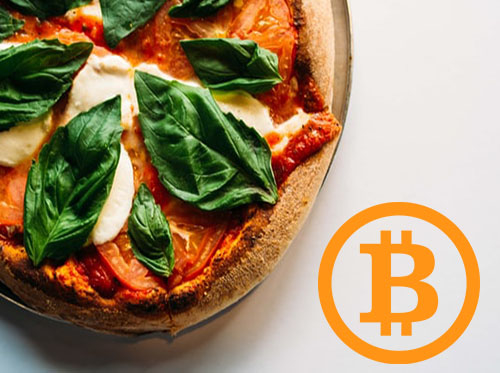Time Out, MeatEater, NY Times, Complex: The Role of Commerce in Food Media
WHAT are recent food media M&A deals?
Select food media M&A over the past year:
-
Sept 2019: Food52 sold a majority stake to The Chernin Group for $83M (at a valuation of $100M+)
-
July 2019: Martha Stewart & Emeril Lagasse brand properties are acquired by Marquee Brands for a combined $215M
-
Sept 2018: The Infatuation raised $30M from Jeffrey Katzenberg’s WndrCo
-
March 2018: Scripps Network Interactive (home of The Food Network & Cooking Channel) is acquired by Discovery for $11.9B
Select “food-adjacent” media company activity:
-
Jan 2020: Barstool Sports (home of the famous “One Bite” Pizza Reviews) has raised $151M over the past 2 years and was valued at $450M after its recent investment by Penn National Gaming.
-
2019: Complex (home of the popular “First We Feast” food vertical, featuring the hit show “Hot Ones”) generates $200M in revenue
-
October 2019: MeatEater raised $50M from The Chernin Group
-
March 2018: Goop raised $50M from Felix Capital, LVP and NEA
The above M&A and revenue activity, when benchmarked to media peers, signals that food media is commanding outsized operator success and valuation premiums relative to peers. Through RockWater’s recent client work, we’ve therefore conducted extensive research to find out why, as well as how food media leadership has built in pursuit of this opportunity space.
WHY is food media driving outsized M&A and revenue activity?
The consistently strong performance of media companies in the food space is particularly interesting to us considering the volatility of the overall media market. The companies that are struggling most in today’s media market (some examples listed below) are overly dependent on advertising revenue:
-
Vice was written down to a $0 valuation by Disney (Vice once valued itself at over $1B)
-
Mic and Salon were each acquired in fire sales for only $5M
-
Massive layoffs at College Humor, Bustle, and Mic
-
Gawker and Deadspin have been shut down
Conversely, the media companies that are thriving have diversified revenue models with significant D2C commerce footprints and a decreasing dependence on ad revenue. We believe the food media space uniquely enables revenue diversification.
Food media companies are particularly conducive to commerce success (we define “commerce” to include affiliate sales, merch, branded products, subscriptions, event ticket sales, etc). The food/cooking lifestyle vertical is especially “purchase-able”, and content brands associated with this category have been able to drive a disproportionate volume of D2C and commerce revenue relative to other lifestyle categories.
Dan Frommer of The New Consumer asks,
“are food and home unique — where people cook every day, and need tools to prepare meals, and therefore you can use recipe pages to promote tools you’re selling?”
We believe the answer is yes.
This trend is epitomized by Food52, which generates 75% of its $40M in annual revenue from sources outside of advertising (which helped drive Chernin’s purchase price valuation of $100M+).
The commercial viability of food media becomes clear upon review of diversified media portfolios containing a broad array of lifestyle verticals. The food brands within each portfolio consistently outperform their counterparts when it comes to commerce revenue:
-
Time Out has 31 sections devoted to categories such as film, art, and music. It has one section dedicated to restaurants…which drives the majority of the company’s revenue. Time Out converted its Restaurant section, where its local editors find and recommend the best restaurants in town, into a shoppable experience by opening Time Out Market food halls. With 6 locations around the world (and 3 more set to open by 2023), these food halls have quickly become the foundation of Time Out’s revenue model. In 2018, the Lisbon market generated $11M (18% of Time Out’s total revenue) and had 3.9M visitors, making it the most-visited attraction in the entire city. The 4 US markets generated $15M in revenue in 2019, and by the end of 2020 60% of Time Out’s revenue is expected to come from its food hall business.
-
The New York Times has 19 news categories, spanning everything from sports to politics to romance. However, only 2 NYT categories have their own standalone subscription apps; one is the New York Times cooking app, which generates $1.5M of monthly revenue and has 300k subscribers (the other is the NYT Crossword App).
-
MeatEater, a popular outdoor lifestyle brand (majority-owned by The Chernin Group) is not a food brand. Of its 7 flagship shows across video and audio, none of them are primarily about food or cooking. However, upon review of its commerce offerings (where MeatEater generates the majority of its revenue), much of those offerings in its online shop are related to food/drink/cooking. Of note, “The MeatEater Fish & Game Cookbook” reached the #10 most-sold book in the nonfiction category on Amazon Charts, and the “MeatEater Straight Bourbon Whiskey” sold over 60% of its first batch of the first three days of sales.
-
Complex successfully generates commerce revenue across all of its lifestyle categories (ComplexCon and Complex’s “Premium” online marketplace are both best-in-class examples worthy of deeper dives – we’ll save that for another Through Line newsletter). However, Complex’s food vertical “First We Feast” is the company’s strongest commerce performer. Due to initiatives like a “Hot Ones” branded hot sauce collection (which generated $7M in 2018 sales), 85% of “First We Feast” revenue is generated outside of advertising.
-
Barstool Sports has diversified programming across a broad spectrum of lifestyle categories (which we wrote about in Barstool Sports & The Ringer: Lessons about Growth). Barstool is not considered a food-brand, though we believe it to be “food-adjacent” because it has successfully capitalized on the unique purchase-ability of food media. Like the New York Times, outside of its main app Barstool only has 2 standalone apps dedicated to a specific niche. One of them is “Barstool Bets” (a smart brand extension considering the monetization opportunity with recent gambling regulation changes,…and which was validated by its new investment by a casino operator) and the other one is less obvious: a pizza review and delivery app called “One Bite”. This app partners with Slice (a food delivery platform for independent pizzerias) to power pizza delivery to “Stoolies” across the country. Within a month of its launch, the app had 175k+ downloads and 100k+ pizza deliveries. Barstool also made a splash in the beverage market by selling a million bottles of its “Pink Whitney” vodka in just 6 weeks. Furthermore, in his announcement of the recent $136M investment from Penn National Gaming, founder Dave Portnoy noted that after gambling, food/drinks were the first areas of business expansion that Barstool would pursue with its new capital infusion (specifically, Barstool pizzerias and bars).
These case studies illustrate how uniquely well-suited food media is for commerce success – food media brands over index on D2C commerce relative to other lifestyle categories. The enhanced “shoppability” of food/cooking content helps answer the question of why food media brands are so valuable, but it doesn’t tell us how company leadership have specifically built their businesses in pursuit of the commerce opportunity.
HOW do food media brands build smart commerce strategies?
The term “pivoting to commerce” is a broad term that oversimplifies both the journey and the destination. There are many paths taken towards commerce success. When evaluating a brand’s commerce evolution, it’s essential to consider:
-
Sequencing: We at RockWater believe it’s essential to pursue parallel paths of developing content and commerce. The most successful companies raise a round of capital and allocate part of it towards content (programming, distribution, and audience development), and part of it towards building out a commerce footprint. The result is a well-proportioned revenue mix and an organic evolution towards a more diversified business.
-
Risk management: It’s important to not dive into commerce head first – the most successful brands evolved gradually yet deliberately. Good operating teams test the potency of their brand and its ability to convert viewers/readers into buyers by starting with low-cost, low-risk, and low-upside initiatives. After proving their value as a commerce brand and the ability to more directly monetize their audience, these brands typically then invest more heavily in high-cost, high-risk, high-upside initiatives (most brands that aren’t associated with a larger parent company raise capital in between these phases).
-
Whether to buy, build, or partner: The level of risk associated with a commerce lane is largely determined by whether the initiative is being pursued by (A) building the product/capability in-house (high cost/risk/upside), (B) buying a company with that capability via M&A (high cost/risk/upside), or (C) partnering with another company to provide a new capability (low cost/risk/upside).
Brands must be deliberate about which commerce lanes they’re expanding into, what the risks associated with each lane are, how they’re going to enter that lane, and when it’s most prudent to do so.
TO BE CONTINUED….
Unsurprisingly, we have a lot more to say on this subject!
We’d love to walk you through the 9 Food Media commerce lanes that we’ve identified (from online marketplaces and shoppable content to O&O products and ticketed events), and the most interesting case studies associated with them (The Infatuation, Mario Batali, Goop, Food52, Twisted by Jungle Creations, Tasty by Buzzfeed, Complex, Food Network, Binging with Babish, Serious Eats by Fexy Media, and many more).
—
Ping us here at anytime. We love to hear from our readers.



